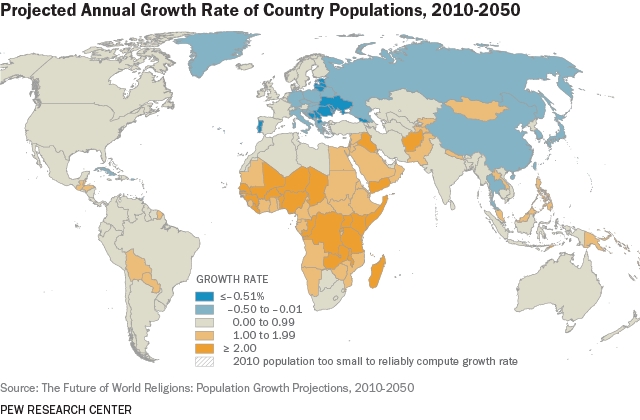
World’s Muslim population more widespread than you might think: Pew Research Center

President Donald Trump’s recent executive order temporarily freezing immigration from seven predominantly Islamic countries would affect only about 12% of the world’s Muslims, according to estimates from a 2015 Pew Research Center report on the current and projected size of religious groups. In fact, of the seven countries named in the new immigration ban – Iran, Iraq, Libya, Somalia, Sudan, Syria and Yemen – only one, Iran, is among the 10 countries with the largest Muslim populations.
As of 2010, there were an estimated 1.6 billion Muslims around the world, making Islam the world’s second-largest religious tradition after Christianity. And although many people, especially in the United States, may associate Islam with countries in the Middle East or North Africa, nearly two-thirds (62%) of Muslims live in the Asia-Pacific region, according to the Pew Research Center analysis. In fact, more Muslims live in India and Pakistan (344 million combined) than in the entire Middle East-North Africa region (317 million).
However, the Middle East-North Africa region has the highest concentration of Muslims of any region of the world: 93% of its approximately 341 million inhabitants are Muslim, compared with 30% in sub-Saharan Africa and 24% in the Asia-Pacific region.
Muslims make up a majority of the population in 49 countries around the world. The country with the largest number (about 209 million) is Indonesia, where 87.2% of the population identifies as Muslim. India has the world’s second-largest Muslim population in raw numbers (roughly 176 million), though Muslims make up just 14.4% of India’s total population.
Pew Research Center uses an array of surveys, census reports, population registers and other data sources to estimate numbers of Muslims and other religious groups around the world, the goal being to count all groups and people who self-identify with a particular religion. The figures presented here are as of 2010.
Looking ahead, the Center estimates that by 2050 the number of Muslims worldwide will grow to 2.76 billion, or 29.7% of world’s population. The share of the world’s Muslims who live in sub-Saharan Africa will increase from 15.5% in 2010 to 24.3%. Asia, which is currently home to more of the world’s Muslims (61.7%) than all the other regions combined, will continue to host a majority of the world’s Muslims, albeit with a smaller share (52.8%). As for the Middle East and North Africa, the region will roughly maintain its share of the world’s Muslims, rising only slightly from 19.8% to 20.0% in 2050.
Just 0.2% of the world’s Muslims live in North America. In the U.S., Muslims are projected to double from 0.9% of the population in 2010 to 2.1% by 2050 based on recent demographic and migration patterns.























